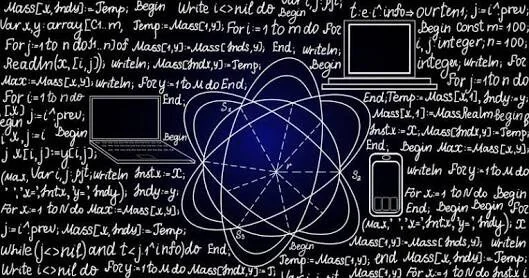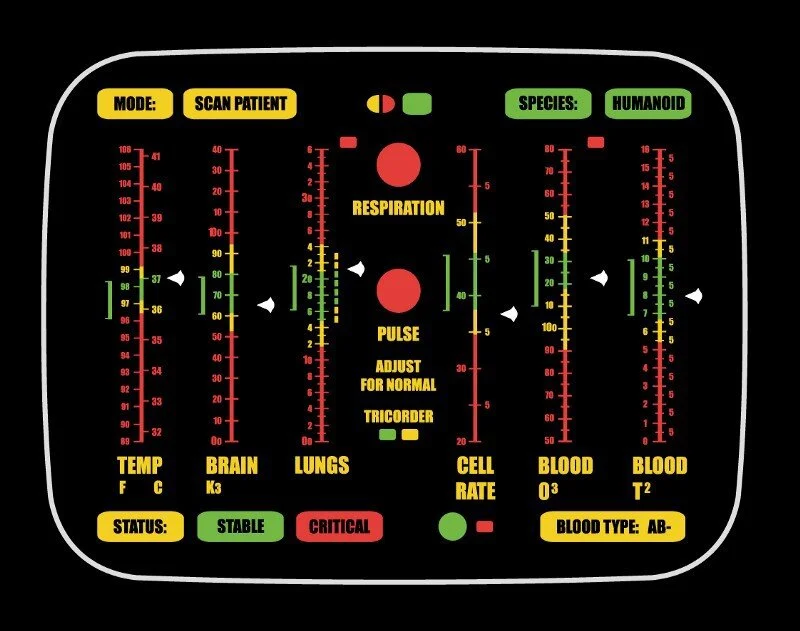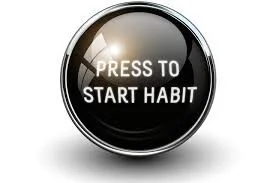Triggers — The Key to Building and Breaking Habits
A Guide to Programming in the Human Biocomputer
(This is Part 2 of 4 in The Habit Series.)
What are habit triggers?
A trigger is defined as an event that kicks off the automatic urge to complete a habit. Triggers are the key to forming new habits and breaking old ones. Simply put, triggers make the habit action happen.
A trigger can be anything in our environment which our brains associate with a habit. These contextual factors such as where we are, who we are with, and what just happened have a powerful and invisible effect upon our behavior.
Every time a trigger precedes a habit, our brains strengthen the association between a habit and its trigger. This associative process is described in neuroscience as Hebbian learning, and is summarized by “neurons that fire together, wire together.” As an association between a habit and a trigger increases, the habit becomes more and more ingrained until we can perform our habits on full auto-pilot.
This animation is a fun way to intuitively understand how these associations happen in the brain: http://ncase.me/neurons/
• • •
Why are triggers important?
As the [trigger] <> [habit] association strengthens, the habit becomes more automatic. Over time, it will be easier and easier to stick to the new habit.
Similarly, an understanding of triggers is essential for an ability to break old habits. Our old habits are constantly being reinforced by their triggers. We tend to repeat what we previously did in a similar situation.
No Trigger = No Habit.
If the trigger for an old habit never occurs, the habit loop is interrupted. Without repeated reinforcement, the association between habit and trigger weakens through neglect. Therefore, if we can eliminate our exposure to triggers for old habits, we can eliminate the habits themselves.
How can we create triggers that work?
Triggers are quite easy to recognize and formulate once you understand them. We can use triggers to program our behavior in the same way we would program a computer. Computers perform incredibly complex operations by combining simple algorithms, each with a basic format of:
“IF [X], THEN [Y]”.
To create a new habit, start by writing it out in the form of an algorithm:
“IF [Trigger], THEN [Do Habit Behavior]”.
The best triggers are all Specific, Consistent, Automatic, and Unavoidable. Below, I provide an example of how to create a more effective trigger for each criteria.
Specific. The instructions are clear, leaving no room for interpretation. Example: [After dinner]→ [After I finish eating dinner]
Consistent. Happening every single day with a reliable frequency. Example: [After getting ready for work] → [After getting dressed]
Automatic. The trigger happens on its own without any ongoing effort. Example: [At 9:30AM] → [When my 9:30AM alarm goes off]
Unavoidable. You cannot do anything to avoid encountering the trigger. Example: [Walking past the gym] → [Leaving my office for the day]
Programmers have a saying that explains why an algorithm starts producing unwanted results: “Garbage In, Garbage Out.” A habit algorithm can only work with the information that you feed it.
• • •
What are some examples of triggers?
There are five categories of triggers. For each category, I share in which situations they are most effective and how they are used in my habit practice.
1) Preceding Event
It is important to realize that there are hundreds of pre-existing triggers already happening throughout your day. Every morning we get out of bed, get dressed, eating breakfast, brush our teeth, leave our bedroom, and arrive at our desk. Each of these preceding events represents an opportunity to stack on a new productive habit.
Many existing habits are an automatic response to something else that is happening in your life. The list of potential triggers in this category is endless, so experiment to learn what works best for you.
[Source: Asian Efficiency]
How I utilize preceding events:
I stack all of my habits together into routines. In a routine, each of the habits forms part of a structure which reinforces the other habits. This is particularly useful in the morning or before bed when energy and attention are lowest.
By completing the trigger action, you set the first routine habit in motion. This increases the chances of completing all of the habits in the routine.
Thus, for best results, make the first habit in the stack something you always do no matter what [ex: getting out of bed].
I will share my best practices for creating routines in a future chapter.
Preceding Events Example:
IF [I get out of the shower], THEN [Eat my vitamins].
2) Time
Our biological clocks and forced synchronization with societal rhythms make time a powerful trigger. We wake up, go to work, and eat our meals at similar times each day.
Time can be very useful with habit building because it leaves no room for ambiguity and has a recurring predictability. 9:15AM happens at the same time every day. The trouble is that we are not reliable timekeepers and thus it is very easy to lose track of time.
This is why we create automatic digital reminders for ourselves such as an alarm, a calendar event, or an app notification. For maximum effectiveness, alarms should be snoozed until the habit is completed rather than dismissed. The best reminders only disappear once the habit is completed.
How I utilize time:
I use labeled alarms on my phone to prompt me when it is time for my next habit to begin. This links a specific time with the habit. For example, my meditation app sends me a push notification at my morning meditation time. For weekly habits such as a weekly review, I create a recurring calendar event which sends me a text message reminder at the time selected.
Time Examples:
IF [I get a 9:15AM app notification], THEN [Sit down to meditate]
IF [I get a Sunday reminder text], THEN [Start my weekly review]
3) Location
Location is a powerful driver of automatic habits. In many cases, our behavior is simply a product of our surrounding environment. Putting ourselves in a supportive environment is the most important upstream action we can take to ensure that we stick to our good habits.
All of our familiar locations have habits (good and bad) already associated with them. If we want to build new habits in these locations, we need to overwrite the triggers that already exist there. Luckily, we can replace some of these location-based triggers with physical reminders for our desired habits.
I find it very effective to place the tools necessary for completing a habit in spaces I frequent around the house. That way, there is no chance I miss seeing them. By placing them in obvious locations, I remember my commitment to completing the habit.
Similarly, the easiest way to break a bad habit is to avoid the physical locations associated with that habit.
I had a client who wanted to reduce his smoking. He had a balcony in his apartment which he enjoyed using for smoke breaks. I had him place a couch in front of the balcony door, blocking the entrance. This barrier was a sufficiently strong incentive not to use the balcony. Instead, he began to go to on the front patio, where the association with smoking was not as strong. This change caused him to smoke fewer cigarettes.
How I utilize location:
I maintain strong mental contexts by having separate places in my apartment for creative work, client-facing work, socializing, and relaxation.
Whenever I get stuck I can hit the reset button by moving to a new environment. By shifting my location, I can shift my mindset.
I utilize physical reminders for all of my habits. For example, I leave a yoga mat next to my bed the night before. This makes it effortless to start the day with a quick stretch. For daily planning, I leave my task list and schedule on top of my laptop. This acts as a reminder to complete them before using my computer.
Location Example:
IF [I get stuck working at home], THEN[Move to a nearby cafe]
IF [I see my yoga mat], THEN [Stretch for 5 minutes]
4) Emotional State
Emotions are common triggers for our bad habits. We eat, not because we are hungry, but because we are bored. We play mindless games or impulsively check social media, not because we enjoy them, but to distract us from our stress and anxiety.
I believe emotions are important signals from our subconscious that we should listen to rather than repress. We cannot change our bad habits until we diagnose the underlying causes of the emotions which are triggering them.
Identifying emotions in the moment can be difficult because the emotions themselves cloud our awareness and may generate resistance to taking action. It is critical that we identify objective signs that we might be in one of these negative emotional states. I call these signs Warning Lights.
The best Warning Lights are easy to recognize even when our judgment is clouded. We use recognition of a Warning Light as a trigger for a “recovery habit” which will help us slow down and regain control over our emotions, or at least put us in a better position to deal with them.
A good rule of thumb for recovery habits is that they are the things that we will never regret doing. Expressing gratitude, journaling, listening to great music, walking outside, and exercising are examples of things we may resist doing in the moment but will always be happy we did afterward.
Think about your warning lights as a dashboard for your current emotional state.
How I utilize emotional state:
I give several examples of Warning Lights with my associated recovery habits in the chapter “A Guide to Getting Unstuck” which I would highly recommend checking out. =)
As a professional poker player, losing emotional control at the tables is known as “going on tilt”. A player on tilt can cancel out weeks of earnings in minutes due to poor decision-making. An ability to minimize the effects of tilt can be the difference between being a top pro and not making a living. By being conscious of my Warning Lights for tilt and installing habits to short-circuit the vicious loop it can cause, I have saved absurd amounts of money over the years compared to other poker players.
Emotional State Examples:
IF [I want to check my Facebook feed], THEN [Walk around the block]
IF [I take a bad beat], THEN [Sit out from the poker table]
5) Other People
Besides genetics, peers are the primary predictors of our personalities and behavior. If your habits aren’t so great, your friends’ habits probably aren’t so great either.
“You are the average of the five people you surround yourself with.”
This is a quote that is often repeated but rarely applied. Friends will reinforce and encourage the behaviors that they value and sabotage (usually unconsciously!) the behaviors which they don’t value. Simply put, spend more time around the people who embody the traits you want to create in yourself.
Thus, when building (or breaking) a habit, it is critical to get the explicit support of your significant other, your roommates, and anyone else you spend a lot of time with. They will question your choices less once they understand the motivations behind them. They can also call you out if they sense you are falling off the wagon. You will be surprised how helpful your friends can be if you only let them know how to best support you.
To maximize chances of success, turn habit-building into a multiplayer game by recruiting habit allies. Workouts like Crossfit or Jiu-jitsu are popular because of the strong communities and shared rituals that form around the exercise.
Choose a friend with similar goals and agree to hold each other accountable. For best results, have that friend meet you at a specific place and a specific time to do the habit together.
How I utilize other people:
I try to have social reinforcement for all my goals and habits by [making them public] and joining communities with similar values where I can observe how others approach similar challenges.
I attend a group meditation and yoga class at least once a week to support my home practice. I regularly work with coaches and teachers to have space for feedback and course correction. I pre-commit to a new habit in advance (prepayment, scheduling with a friend, making a bet, etc) whenever possible.
Other People Examples:
IF [I sign-up for a workout class], THEN [See if a friend wants to join]
IF [I enter a party], THEN [Walk towards a group that is not drinking.]
Once you have mastered triggers, it will really be this simple.
An Exercise to Put It All Together
Before you close this and move on to the next tab, let’s make sure you actually get some value from my advice by applying what you have learned.
Habit Building
Name one habit that you are building or would like to build.
What is the current trigger(s) that sets the habit in motion?
How can you improve the trigger? Spend one minute writing down ideas.
Can this trigger be…
More specific?
More consistent?
More automatic?
Less avoidable?
4. Can this trigger be combined with a trigger from a different category? Spend one minute writing down ideas.
Can you…
Increase the frequency or consistency of the preceding event?
Add a time reminder?
Create a more supportive environment?
Improve or link your emotional state?
Find someone to support this habit?
Habit Breaking
Name one habit that you are breaking or would like to break.
What are the current trigger(s) which might set the habit in motion?
How can you decrease the likelihood of these triggers? Spend one minute writing down ideas.
Can you…
Reduce the frequency of the preceding event?
Replace your association at that time of day?
Avoid the triggering location or make the environment less tempting?
Reduce the effects from a negative emotional state?
Find someone to support you in breaking this habit? Is there someone you should be distancing yourself from?
• • •
In order to create strong habits, we need strong triggers. If you regularly forget to do your habit, you need to reinforce your context associations. Try linking the habit to a reliable preceding action, adding a time- or location-based reminder, or finding a habit ally.
If you are having a hard time breaking a habit, you need to create a separation from your triggers. Examine the circumstances where the habit is broken. Try changing your environment or with whom you spend time. Plan alternative responses for when you are in that emotional state.
Next in The Habit Series:
Behavior—Making Your Habits Easier
Leveraging our environment to stack the odds of completing a habit in our favor.



![[Source: Asian Efficiency]](https://images.squarespace-cdn.com/content/v1/5be9a110506fbe48816e9ab2/1585083447931-9MCQAJW982Z8LYUHIWOX/triggers+3.png)

